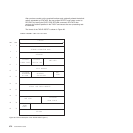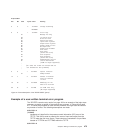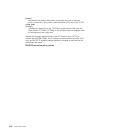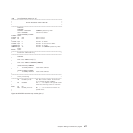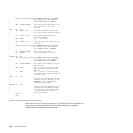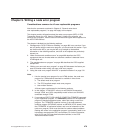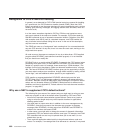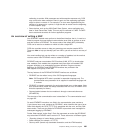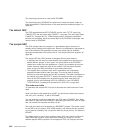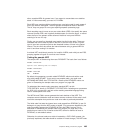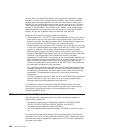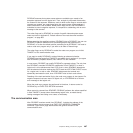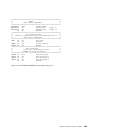The action flags can be set or reset within DFHZNEP.
The action flags set by DFHZNAC for specific error codes and sense codes are
listed in Appendix B, “Default actions of the node abnormal condition program,” on
page 855.
The default NEP
The CICS-supplied default NEP, DFHZNEP, sets the “print TCTTE” action flag
(TWAOTCTE in the user option byte TWAOPT1—see page “The user option bytes
(TWAOPTL)” on page 491) if a VTAM storage problem is detected; otherwise it
performs no processing, leaves the action flags set by DFHZNAC unchanged, and
returns control to DFHZNAC.
The sample NEP
The CICS sample node error program is a generalized program structure for
handling errors detected from logical units. None of its components is generated as
part of the standard CICS generation process, but instead may be optionally
generated as described in this section and in “The sample node error program” on
page 496.
The sample NEP that CICS provides is designed with two main features:
v It assumes that you want to invoke separate user-supplied error processors to
handle different “groups” of error types. You specify which of the DFHZNAC
internal error codes are to be regarded as a “group” for processing by any one
routine, and then supply the code for that routine. CICS has some standard
cases to help you. More information is given about them below.
v The supplied error processors may work in association with a separately
generated module called a node error table. This can be used to build up
statistics for each error group that the NEP processes. This table is analogous to
the terminal error table, DFHTEPT, used by the sample terminal error program.
Some of the CICS-supplied error processors use the node error table—for
example, that for errors affecting 3270 LUs (GROUP=1) (see “DFHSNEP
TYPE=DEF3270—including error processors for 3270 LUs” on page 500).
The node error table
To understand the sample NEP, first look at the node error table structure in more
detail.
Node error table is often abbreviated to NET. You should not confuse this acronym
with “net” (as in “network”), or with a NETNAME.
You can generate a node error table using the CICS macro DFHSNET. See “Node
error table” on page 497 and “DFHSNET—generating the node error table” on page
503. You choose how complex this table is to be.
The node error table must be defined as a RESIDENT program. This makes it easy
for the NEP to find it (using a CICS LOAD request), and ensures that any counters
are not reset by reloading. You can give the table any name you like. The default is
DFHNET.
The table consists of sets of error-recording areas. Each set is called a node error
block (NEB) and is used to count node errors relating to a single LU. You can
dedicate specific NEBs to specific LUs throughout a CICS run; and you can leave
482 Customization Guide



